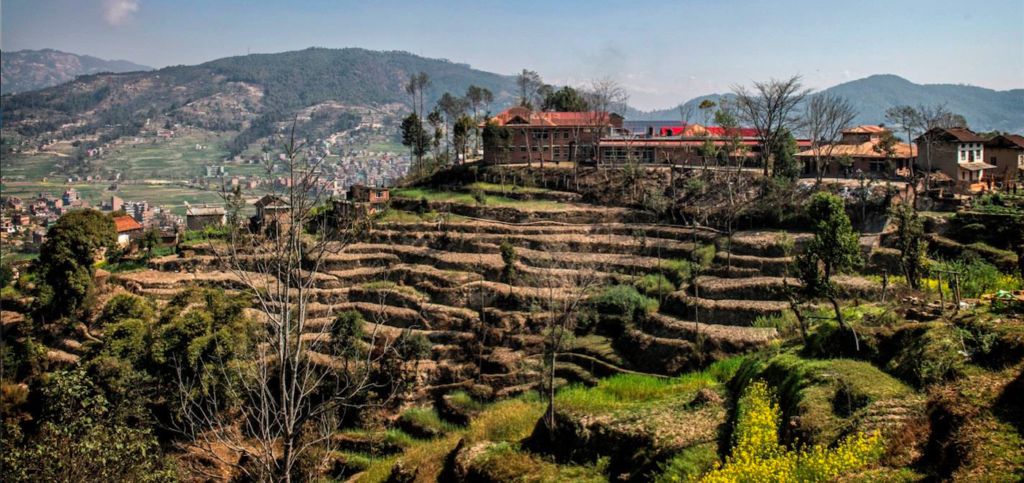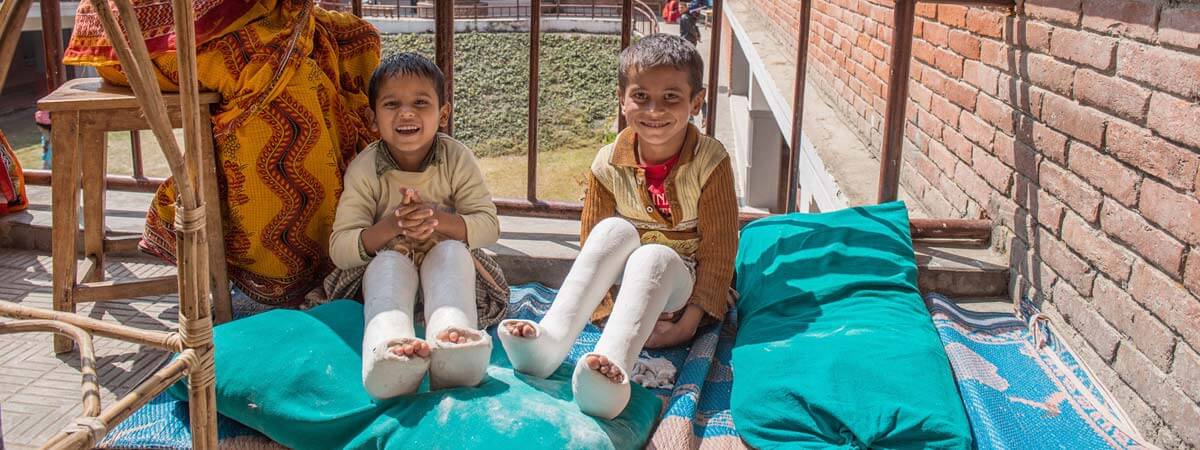Nepal is the second poorest country in Asia, a beautiful but mountainous land of subsistence farming on steep inclines—and a place where having a physical disability can be a life sentence.
When day-to-day survival is a struggle, poor children with disabilities are often left behind. Not because parents don’t care, but because they have few options. Doctors are expensive and scarce in rural areas, and health posts are often understaffed and undersupplied.
Disability is closely linked to poverty. For the eighty percent of Nepalis who live on less than $2 a day, a child’s serious condition can debilitate the whole family. Malnutrition, poor hygiene, and inadequate information or services can aggravate and even cause disability. Children suffer not only from lack of comprehensive treatment and rehabilitation, but from social stigma and exclusion when they are disabled.
As recently as 2011 Nepal had only two physicians and fewer than five nurses and midwives for every ten thousand people, according to the World Health Organization. By comparison, China had fourteen physicians for every ten thousand people.
So the bad luck of a break or burn, or a condition like clubfoot, can be left untreated and make it impossible for a child to get to school or help their families. For those children, the consequences can last a lifetime. They despair. With no education or skills, they lose any hope for a decent job or even marriage.
One reason Nepal has so few physicians outside Kathmandu is that until recently many of its medical students had to study in other countries. Medical training was not available in Nepal. Aspiring physicians often decided to live and work in other lands where better professional opportunities beckoned.
Dr. Ashok Banskota is one who decided to return. After finishing a residency at the Albert Einstein College of Medicine at Yeshiva University in New York City in the early 1980s, he went back to his native Nepal. His life story is a powerful illustration of how one child born into modest circumstances can grow up to make a huge impact in his community, and his country.
Encouraged by the Swiss humanitarian group Terre des hommes, Ashok opened a small orthopedic clinic in a rented, three-story house in a suburb of Kathmandu. His sole focus was treating children with disabilities, children nobody else would see. “When are you going to get a real hospital?” our foundation director Erica Stone asked him in 1992. “When you help me build one,” he said, smiling. Erica, who soon became and continues today as foundation president, didn’t hesitate. “OK,” she replied. “We’ll do that.”
We soon raised funds to become an important contributor to that hospital, the Hospital and Rehabilitation Center for Children (HRDC) in the town of Banepa, and with the help of passionate donors who’ve become a vital part of this story in their own right, we’ve never stopped.
I’ll write more about Dr. Banskota, his patients, and the inspiring stories of HRDC staff of physicians, nurses, therapists and craft persons – and their patients – this month. But for now here are a few more snapshots and insights.
The aftermath of the 2015 earthquakes that killed 9,000 Nepalis brought a flood of new patients to HRDC, many of whom had to be treated in tents. Political instability during the winter of 2016 made supplies and fuel scarce. For example, firewood was used to cook meals for the kids.
But they haven’t missed a beat. By the end of 2016, more than 72,000 children had been treated since HRDC opened in that rented house in the mid-1980s. In the first six months of last year, more than 13,000 children were treated at the hospital, three satellite hospitals, or an outreach camp in remote areas of the country. Medical teams perform about 200 surgical procedures a month. Expert craft persons created thousands of customized devices required for rehabilitation, such as wheelchairs from discarded bicycles and artificial limbs from local materials.
In the eyes of the kids and their families, the HRDC staff are miracle workers. The care these kids receive helps them become more independent, from taking their first steps—to taking the first step to school. And, in time for some, returning to the fold. Twenty-five of the staff are themselves persons with disabilities, onetime HRDC patients who know what it’s like to experience promise and possibility in their lives for the first time.
For more than thirty years, Dr. Banskota has never taken a penny in compensation for his tireless dedication to the most vulnerable Nepali children. Every step, every act was volunteered during hours when this world-class orthopedist was not helping patients in other Nepali medical centers, or on occasion, sleeping.
The children “who came for help and treatment stole my heart,” he says. “The enormous difficulties they faced to receive very basic and primitive care were hard to stomach. The immense satisfaction of helping…spurred me on.”

To learn more, please visit the American Himalayan Foundation Healthcare blog.
Photos courtesy of the American Himalayan Foundation


Leave a Reply